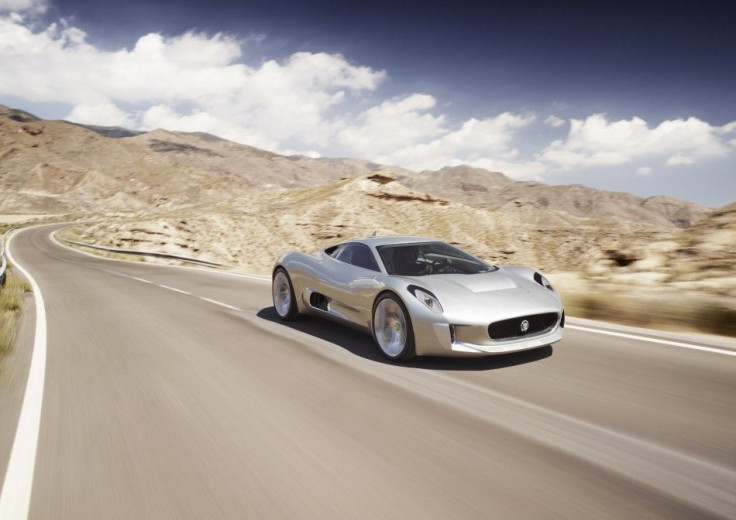
Twenty years ago, Jaguar introduced its epic XJ220 supercar with an extreme twin-turbocharged V6 powerplant when other vehicles of its eschelon offered V8 or V12 engines. According to Jaguar, the decision was to create a package with better balanced weight distribution and lower weight overall. Short on cylinders and displacement, the twin-turbo XJ220 still reached a top speed exceeding 200 mph and completed 0-to-60 mph in just 3.6 seconds. Until the arrival of the McLaren F1 in 1994, the Jaguar XJ220 was the fastest production car in the world. To date, there's nothing else quite like it... until now.
The Jaguar C-X75 is scheduled to hit the market late next year and although the concept was initially equipped with a jet-turbine engine, the production version will offer a different, but no less interesting, powerplant.
Jaguar handpicked select journalists to visit its test facility in Gaydon, England and introduced a radical supercharged, turbocharged, and direct-injected 1.6 liter four-cylinder engine that produces, wait for it, more than 500-hp at over 10,000 rpm! In other words, that's at least 312.5-hp per liter, or an energy ratio comparable to a nuclear reaction. The 1,200-hp 8.0 liter powerplant in the Bugatti Veyron Super Sport, the current fastest production car, only makes 150-hp per liter.
Mated to a seven-speed single clutch transmission (for lightness, see the trend here?), power is either transferred to the rear wheels or used to generate electrical energy for the C-X75's lithium-ion battery pack. Two electric motors power an axle each and combine its power with the internal combustion engine to hurl the super cat from 0-to-60 mph in under 3 seconds, propelling itself to a top speed of well over 200 mph.
Unlike the XJ220, the new C-X75 doesn't have to be a face melting hypercar 24/7 if you don't want it to. In all-electric mode, the C-X75 travels from 0-to-60 in a more civil time of just under 6 seconds.
Regardless of the numbers that other supercars are posting, keep in mind that Jaguar's supercar is out to challenge them with half the number of cylinders and less than half the displacement. The sheer performance extracted from its force induction setup is just unreal.
Jaguar will only produce 200 examples of the C-X75. Expect each to cost about $1 million. For the engine alone, it should be worth every penny.
[Source: Autocar]




